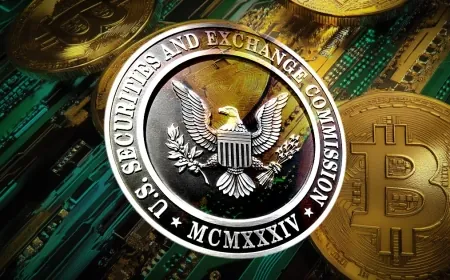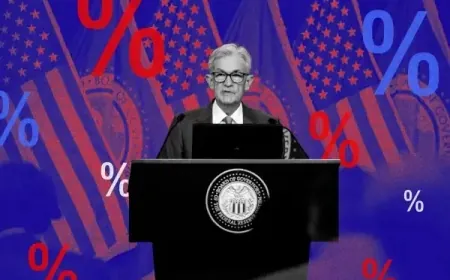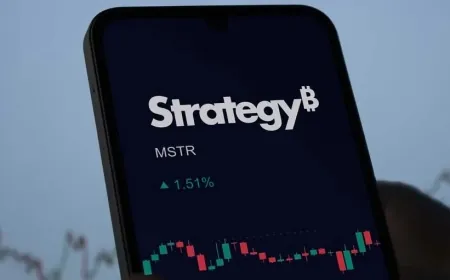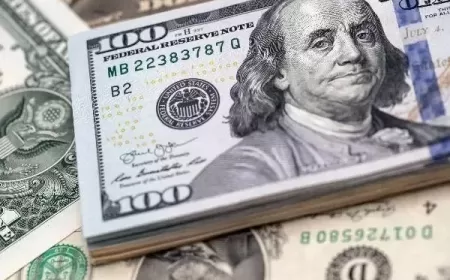Analyst Predicts Bitcoin Will Triple to $333K by 2030
A new forecast suggests Bitcoin’s price could climb to $333,000 by 2030, outpacing stock market returns.

Bitcoin’s next decade could see another dramatic surge in value. Market analysts are forecasting that the cryptocurrency may reach $333,000 per coin by 2030, a threefold increase from current levels. The projection comes as U.S. federal debt approaches the $40 trillion mark, fueling concerns over long-term dollar stability and reinforcing investor interest in Bitcoin’s capped supply of 21 million tokens. Unlike traditional assets, Bitcoin’s scarcity is programmed into its code, making it a potential hedge as fiscal pressures and monetary expansion reshape global markets.
U.S. Debt Nears $40 Trillion
America’s national debt is projected to surpass $40 trillion in the coming years, raising concerns about the long-term strength of the U.S. dollar. Decades of deficit spending and aggressive monetary policy have expanded the money supply at unprecedented levels. Critics argue that this “debt spiral” makes fiat currencies increasingly vulnerable to inflation and devaluation.
In contrast, Bitcoin’s supply is capped at 21 million coins, with a predictable issuance schedule enforced by its blockchain protocol. This scarcity is attracting investors who view it as a hedge against dollar debasement. As more dollars chase a limited number of coins, the case for Bitcoin as “digital gold” grows stronger.
Wall Street Moves Into Bitcoin
Spot Bitcoin ETFs, approved in the U.S. earlier this year, have drawn billions of dollars in new investments. BlackRock, Fidelity, and Ark Invest are among the firms now offering products that let pensions, hedge funds, and retail investors buy Bitcoin through regular brokerage accounts.
The launches have pushed Bitcoin deeper into mainstream finance. Daily trading volumes have risen, and the funds give investors a regulated way to hold the cryptocurrency without relying on exchanges. Market strategists say steady inflows from these ETFs could make Bitcoin less volatile over time and cement its role as an asset class.
Global Adoption Expands
Bitcoin’s use extends beyond U.S. markets. El Salvador recognized it as legal tender in 2021, and the Central African Republic followed in 2022. Lawmakers in Argentina and Brazil have also debated legislation on digital assets, though without formal adoption so far.
In high-inflation economies such as Argentina, Turkey, and Nigeria, trading volumes on peer-to-peer platforms have surged. Data from Chainalysis shows that Sub-Saharan Africa now accounts for one of the fastest-growing regions for cryptocurrency transactions.
Remittances are another driver. In countries with strict capital controls, Bitcoin offers a way for workers abroad to send money home without relying on banks or local currency shortages. Analysts say this grassroots usage highlights Bitcoin’s growing role in cross-border finance, even if risks around volatility and regulation remain.
Returns Could Outpace Stocks
If Bitcoin were to reach $333,000 by 2030, it would translate into an average annual gain of about 25% over the next six years. That compares with the S&P 500’s historical annual return of roughly 10%.
The pace would still fall short of Bitcoin’s recent performance. According to CoinGecko, Bitcoin delivered an annualized return of 61% over the past five years. Analysts say such explosive gains are unlikely to repeat as the market matures.
Instead, forecasts now point to more moderate growth. “We’re moving from hyper-growth into a phase of sustained appreciation,” said Michael Saylor, chairman of MicroStrategy, in a recent interview. “Bitcoin is no longer a fringe asset — it’s becoming part of institutional portfolios.”
Price Stability Still Elusive
Even with long-term bullish forecasts, Bitcoin’s track record of sharp swings remains a concern. The cryptocurrency’s price is sensitive to Federal Reserve policy shifts, global liquidity cycles, and investor sentiment. External shocks — from regulatory crackdowns to security breaches or geopolitical crises — can spark sudden sell-offs.
A clear example came during the 2022 bear market, when Bitcoin plunged more than 70% before staging a recovery in 2023–2024. Analysts warn that such volatility is unlikely to disappear, meaning investors must weigh short-term turbulence against the broader upward trend.
Bitcoin Gains Ground as Gold Alternative
Advocates increasingly compare Bitcoin to gold, pointing to its limited supply, portability, and ease of transfer. Unlike gold, Bitcoin can be divided into small fractions and sent across borders in minutes, making it more practical in a digital economy.
This comparison is gaining traction as debt-heavy governments fuel skepticism toward fiat currencies. Analysts argue that Bitcoin’s positioning as a modern store of value, combined with institutional adoption, could help push its price closer to the $333,000 mark by 2030.
Also Read: Tether to Introduce USAT Stablecoin in U.S. Led by Bo Hines





























































